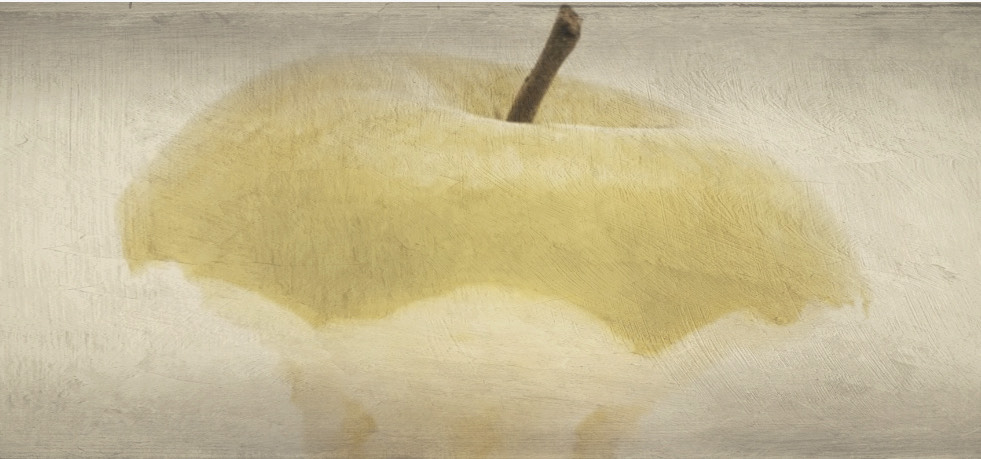
For the last two weeks, I have been in Rockport, ME at the Maine Media Workshop + College, finishing the second semester of my MFA degree (week one) and participating in an intensive workshop on Professional Development (week two). For most of the second week, we devoted our time to crafting authentic and meaningful artist statements.
The process is proof of the adage that says “If I’d had more time I would have written less.”
What is an artist’s statement?
The artist statement lays out for the viewer the key ideas, issues, struggles, and goals within your work or studio practice. It absolutely does not “describe” the work or what it is about. That is left to the viewer to determine for herself, himself or itself.
So, the artist’s statement is NOT: “This work is about the slow but inexorable silencing of the female voice since #MeToo.” Forget the word “about.” Ban it.
What we talked about a great deal last week is the idea of core. Like an apple. Or a big umbrella spread over the composition of your work and holding together the most important things facing the artist. This core drives the work because it fuels the need for expression. The core is the all-consuming concern. The obsession, even.
The photograph may feature a dying flower. And it may be part of a collection — a body of work — about the last days of flowers, as they wilt and droop with a balletic grace. The artist statement might assert that the work is connected to mortality or aging or slow acceptance. It will not say that the artist works with half-dead flowers. The flowers function as metaphor.
The writing may appear formal. Elitist, even. Lots of words that make the reader of an artist statement wonder, Does anyone actually refer to “mimetic tradition” in every day life? No, not if they wish to be clearly understood in an exceedingly short period of time and generally without contemplation or consideration. When ordering food for takeout, for example, you would not use the term “mimetic tradition”. Not unless you are interested in leaving without your food! But, in art and in literature, this term has very specific meaning. It means copying or miming behaviors, values, ways of being that have been passed down, either by instruction or by the modeling of behaviors and values. Or, as is more often the case, both. Mimetic tradition is rooted in cultural norms and beliefs. It refers to learned behaviors, soaked into our belief systems in such a way as to be unconscious.
Mimetic traditions may lie at the root of a lack of self-esteem and/or a belief that women need to be beautiful and selfless in order to be attractive to men. Mimetic traditions may be found within the core of multigenerational beliefs. Or, sometimes, trauma.
And THIS is why the term “mimetic tradition” is more powerful than simply saying, “Oh, she got it from her mother.”
This is the language of what lies beneath. Inside. Within the core.
Learning the language of art is part of the ongoing study.
Artist statements demand that we keep asking why we do the work we do. “Why am I drawn to ghost-like figures and disturbances within the frame? Why is memory so vital to my work?” The answers should be found in our artist statements.
Here are some examples of artist statements I like a lot:
Nan Goldin
“My desire is to preserve the sense of people’s lives, to endow them with the strength and beauty I see in them. I want the people in my pictures to stare back.”
Sally Mann
“Here, where I live, the place where I was born and will never leave, is a rare world, presenting a common humanity and a durable continuum. Within this intricacy of particulars lie all those universal intangibles; love and light, time and grace.”
Rahim Fortune
“Rahim Fortune uses photography to ask fundamental questions about American identity. Focusing on the narratives of individual families and communities, he explores shifting geographies of migration and resettlement, and the way that these histories are written on the landscapes of Texas and the American South.”
Gerhard Richter
“To bring together in a living and viable way, the most different and the most contradictory elements in the greatest possible freedom.”
And now, after this extraordinary and intense two week residency up in Rockport, I, too, have an artist’s statement, crafted with love and honesty and poetry.
Amy Selwyn
“Amy Selwyn creates multifaceted portraits excavated from memory and myth that assert, I am here. Simultaneously expanding and compressing time, the portraits insist on the continuity of presence.”

Those two sentences — and the clarity of thought contained within — took me five days of work!
With many thanks to our two amazing mentors (Charlotte Dixon and Elizabeth Greenberg, both Maine Media) and my kindred spirits — the eight other MFA candidates participating in the second week (optional) intensive whom I am honored to call friends.
Trust the process, we were reminded. And keep doing the work.